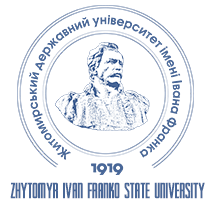INTEGRATION OF A DIGITAL CHATBOT INTO PROFESSIONAL ACTIVITIES: PEDAGOGICAL POTENTIAL, DESIGN AND DEVELOPMENT TRENDS
DOI:
https://doi.org/10.35433/pedagogy.2(121).2025.21Keywords:
chatbot, adaptive learning, pedagogical agents, machine learning, Q-learning, gamification, digital technologies, personalized learning, mathematical modeling, educational environment, designAbstract
This article explores the pedagogical potential of integrating a digital chatbot into an educational environment using adaptive and cognitively oriented approaches. The proposed model combines mathematical modeling techniques, reinforcement learning algorithms (Q-learning), and principles of instructional design to create a digital tutor capable of dynamic interaction with the learner. The system architecture is based on four key modules: a user state analyzer, a task generator, a reinforcement module, and a dialogue manager.
Particular attention is paid to modeling the user's knowledge growth function EXP(t) using stochastic differential equations that take into account learning efficiency, response time, number of errors, and random disturbances. The use of a stochastic task selection mechanism enhances pedagogical variability and supports learner motivation.
The model is implemented as a simulation-based educational game that allows for real-time tracking of cognitive dynamics. Simulation results confirm that the system can adapt to different learner profiles, ensuring a personalized learning trajectory and stable knowledge acquisition even under conditions of fluctuating learning effectiveness.
By combining formal mathematical representations with well-designed functional and pedagogical architecture, the proposed model can be viewed as a promising tool for the digital transformation of education.
References
Winkler, R., & Söllner, M. (2018). Unleashing the Potential of Chatbots in Education: A State-Of-The-Art Analysis. Proceedings of the 2018 Conference on Information Systems [in English].
Holmes, W., Bialik, M., & Fadel, C. (2019). Artificial Intelligence in Education: Promises and Implications for Teaching and Learning. Boston: Center for Curriculum Redesign [in English].
Plass, J.L., Homer, B.D., & Kinzer, C.K. (2015). Foundations of Game-Based Learning. Educational Psychologist, 50(4), 258-283 [in English].
Sutton, R.S., & Barto, A.G. (2018). Reinforcement Learning: An Introduction. MIT Press [in English].
Koedinger, K.R., & Corbett, A.T. (2006). Cognitive Tutors: Technology Bringing Learning Sciences to the Classroom. In R. K. Sawyer (ed.), The Cambridge Handbook of the Learning Sciences. Cambridge University Press [in English].
Chen, C.M., & Lee, H.M. (2017). Emotion Recognition and Feedback System for e-Learning. Journal of Educational Technology & Society, 20(4), 144-157 [in English].
Durlach, P.J., & Ray, J.M. (2011). Adaptive Technologies for Training and Education. Cambridge University Press [in English].
Nguyen, A., Gardner, L., & Sheridan, D. (2020). A Chatbot Framework for Agile Learning: Personalized Feedback and Scaffolding in Software Engineering Education. IEEE Access, 8, 160199-160212 [in English].
Martínez-Muñoz, G., et al. (2022). Modeling Student Behavior with Reinforcement Learning for Educational Games. Computers & Education, 182, 104459 [in English].
Anderson, J.R., et al. (1995). Cognitive Tutors: Lessons Learned. Journal of the Learning Sciences, 4(2), 167-207 [in English].
Kasinathan, G., Nagasubramani, P.C., & Wang, S. (2022). Chatbots in STEM Education: Engagement and Learning Outcomes in a MOOC Context. Education and Information Technologies, 27, 4233-4251 [in English].
Romero, C., Ventura, S., & Pechenizkiy, M. (2023). Data Mining and Learning Analytics in Educational Environments: Recent Advances and Applications. ACM Computing Surveys, 55(3), 1–38 [in English].
Matsumoto, K., & Kim, Y. (2023). Gamification and Adaptive Chatbots in Language Learning: A Comparative Study. Journal of Computer Assisted Learning, 39(1), 113-128 [in English].
Schei, O. M., Møgelvang, A., & Ludvigsen, K. (2024). Perceptions and Use of AI Chatbots among Students in Higher Education: A Scoping Review of Empirical Studies. Education Sciences, 14(8), 922. DOI: 10.3390/educsci14080922 [in English]
Guan, R., Raković, M., Chen, G., et al. (2025). How Educational Chatbots Support Self-Regulated Learning? A Systematic Review of the Literature. Education and Information Technologies, 30, 4493-4518. DOI : 10.1007/s10639-024-12881-y [in English]
A Neuroadaptive AI Chatbot for Customizing Learning Experiences. arXiv preprint, arXiv:2503.07599v1 [cs.HC], 10 Mar 2025. Retrieved from: https://arxiv.org/abs/2503.07599 [in English]
Kaiss, W., Mansouri, K., & Poirier, F. (2023). Effectiveness of an Adaptive Learning Chatbot on Students’ Learning Outcomes Based on Learning Styles. International Journal of Emerging Technologies in Learning (iJET), 18(13), 250–261. DOI: 10.3991/ijet.v18i13.39329 [in English]
Belda-Medina, J., & Kokošková, V. (2023). Integrating Chatbots in Education: Insights from the Chatbot-Human Interaction Satisfaction Model (CHISM). International Journal of Educational Technology in Higher Education, 20, 62. DOI: 10.1186/s41239-023-00432-3 [in English]
Downloads
Published
Issue
Section
License

This work is licensed under a Creative Commons Attribution-NonCommercial-NoDerivatives 4.0 International License.
Authors published in this journal agree to the following terms:
a) The authors reserve the right to author their work and grant the journal the right to first publish this work under the Creative Commons Attribution License, which allows others to freely distribute the published work with a mandatory link to the authors of the original work and the first publication of the work therein magazine.
b) Authors have the right to enter into separate additional agreements regarding the non-exclusive distribution of the work in the form in which it was published by this journal (for example, posting work in an electronic repository of the institution or publishing as part of a monograph), provided that the reference to the first publication of the work is maintained therein. magazine.
c) Journal policy permits and encourages the submission of manuscripts by the authors on the Internet (for example, in repositories of institutions or on personal websites), both prior to submitting this manuscript to the editorial board and as it contributes to the emergence of productive scientific discussion, and has a positive impact on the promptness and dynamics of citing a published work (see The Effect of Open Access).

 ISSN
ISSN 





